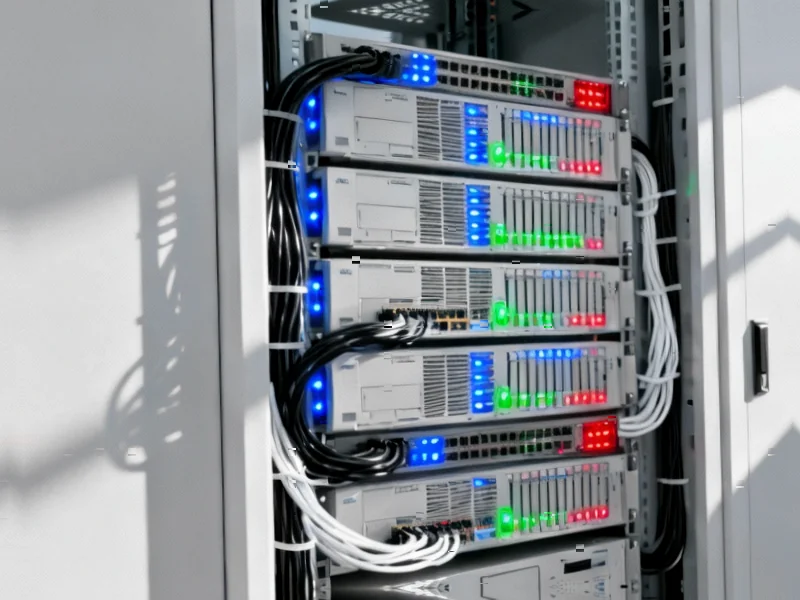According to VentureBeat, New York City startup Augmented Intelligence Inc (AUI) has raised $20 million in a bridge SAFE round at a $750 million valuation cap, bringing its total funding to nearly $60 million. The round was completed in under a week and includes participation from eGateway Ventures, New Era Capital Partners, and existing shareholders including Vertex Pharmaceuticals founder Joshua Boger and former IBM President Jim Whitehurst. AUI’s Apollo-1 model combines transformer technology with neuro-symbolic AI, separating linguistic fluency from task reasoning to provide deterministic outcomes for enterprise applications. The company previously raised $10 million in September 2024 at a $350 million valuation and announced a go-to-market partnership with Google in October 2024, with broader availability expected before the end of 2025. This funding round signals growing investor appetite for AI solutions that prioritize reliability over raw linguistic capability.
The Enterprise Reliability Gap That Transformers Can’t Solve
While transformer-based LLMs have captured public imagination with their creative capabilities, they’ve created a significant reliability gap for enterprise deployment. In regulated sectors like healthcare, finance, and insurance, probabilistic outputs aren’t just inconvenient—they’re legally and operationally unacceptable. AUI’s approach recognizes that most business conversations follow predictable patterns where certainty matters more than creativity. When a customer service agent processes an insurance claim or a healthcare assistant schedules an appointment, the system must consistently apply business rules rather than generating novel responses. This deterministic requirement explains why many Fortune 500 companies have been slow to deploy LLMs beyond experimental use cases, despite significant investment in AI infrastructure.
Neuro-Symbolic AI’s Renaissance Moment
The neuro-symbolic approach represents a return to classical AI principles with a modern twist. Symbolic AI dominated the field for decades before the deep learning revolution, relying on explicit rules and logical reasoning rather than statistical patterns. What makes AUI’s implementation particularly interesting is their multi-year data collection effort involving 60,000 live agents and millions of interactions, which allowed them to abstract a symbolic language from real-world business conversations. This hybrid architecture acknowledges that both approaches have strengths: neural networks excel at pattern recognition in messy, unstructured data, while symbolic systems provide the logical rigor needed for consistent policy enforcement. The timing suggests we’re entering a new phase of AI development where specialized architectures will coexist with general-purpose models.
The Developer Adoption Challenge
AUI’s success will depend heavily on whether they can overcome the ecosystem inertia around transformer models. Developers have spent years building expertise and tooling around OpenAI’s API and similar interfaces, creating significant switching costs. Their decision to offer OpenAI-compatible formats is strategically smart, but enterprises will still need to rethink their approach to conversational AI design. Rather than fine-tuning models with examples, teams will need to define explicit rules and policies—a different skill set that may require retraining or new hires. The one-day deployment claim is compelling, but the real test will be whether enterprises can effectively map their business logic to AUI’s symbolic language without extensive consulting support.
Market Segmentation and Competitive Dynamics
AUI’s positioning creates an interesting market segmentation where they’re not directly competing with OpenAI or Anthropic, but rather complementing them. CEO Ohad Elhelo’s statement that “if your use case is task-oriented dialog, you have to use us, even if you are ChatGPT” suggests they see themselves as specialists in a specific enterprise niche. This could create partnership opportunities with general-purpose AI providers who lack deterministic capabilities. However, it also raises questions about whether transformer-only companies will develop their own neuro-symbolic layers, potentially making AUI’s specialized approach obsolete. The rapid valuation jump from $350 million to $750 million in just months indicates investors believe this architecture differentiation creates durable competitive advantage.
The Underestimated Cost Efficiency Advantage
One of the most compelling aspects of AUI’s approach that deserves more attention is the cost structure implications. By separating symbolic reasoning from neural processing, they can potentially run the deterministic components on cheaper CPU infrastructure rather than requiring massive GPU clusters. In an era where AI compute costs are becoming prohibitive for many enterprises, this architectural decision could be as important as the reliability benefits. As companies scale from pilot projects to production deployments, the total cost of ownership may become the deciding factor rather than raw capability. AUI’s claim of “significantly more cost-efficient” deployment could resonate particularly strongly with cost-conscious enterprises facing budget pressure.




